There is a common conception that racehorses are male. It is hard to tell a horse’s gender by just looking at it, anyway. In truth, both male and female horses race. However, most competitions do have predominantly male horses.
Some races prefer all-male racehorses and vice versa. A lot of factors come into play when choosing racehorses.
Why Are Most Race Horses Male?
You might think that most racehorses are male because of athletic power. However, this is not the case. Both male and female horses are agile and athletic. In the horse racing world, there are reasons for gender preference.
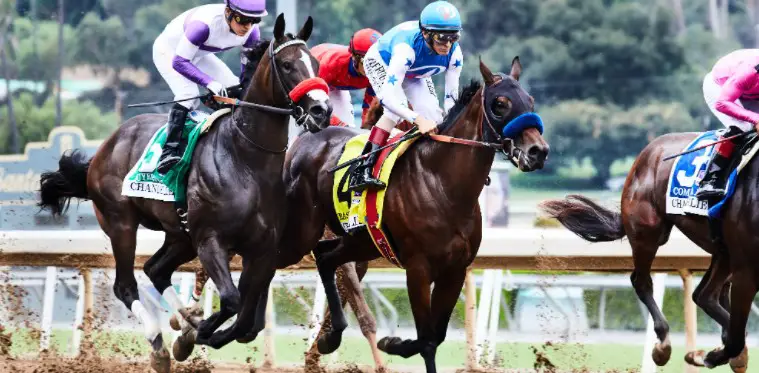
Most horse racers want well-bred colts that they can train well to become champion stallions. Here are other reasons why racers prefer male horses.
1. Female Horse Breeding Time
Winner female racehorses are in demand for their genes. Therefore, they have to take time off to breed. A female horse’s gestation period is a whole year.
Female racehorses cannot race at their best when pregnant, even in the early stages. The year-long break interferes with the female racehorse’s training. When they get back on the track, they may be slower. They will not be in the best shape to compete against highflyers.
2. Size
Every day we hear the notion that men are bigger than women physically on average. Typically, this is true. This same notion applies to racehorses. Male horses are a bit bigger than female horses. In horse racing, this is important.
Muscle size matters because strength is key to winning races. In this regard, male racehorses are a preferred choice.
3. Off-Track Profitability
Successful male racehorses bring in more money as a breeding stud. When racehorse owners buy their horses, they consider this fact. They are keen on purchasing a horse that will earn them money just to sire. Such male horses will make their owners money even after retirement.
4. Hormones
Yes, horses have hormones. Female horses – mares – have an estrous cycle, and go into heat. During this time, the female racehorses are unpredictable.
Hormones, however, interfere with both male and female racehorses. For male horses, high testosterone makes them aggressive and easily distracted. Such traits are a bad show during a race. Some horse owners prefer to castrate their males.
Types of Race Horses
The most common type of racehorse is a Thoroughbred horse. However, there are three other types of horses that are commonly found in horse racing sports.
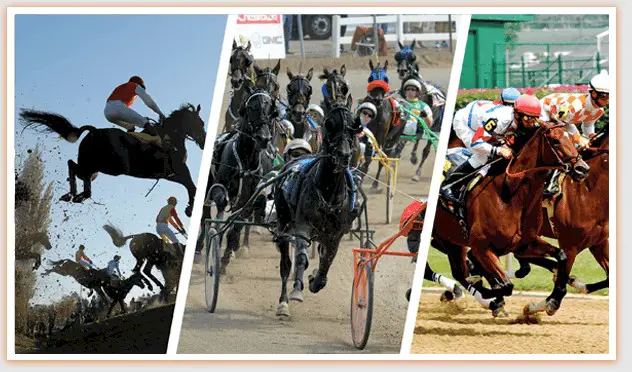
You may not know what breed a racehorse is by looking at it. Have some fun and find out the different breeds.
1. Thoroughbred
Thoroughbred is the most sought-after racehorse. Some races only allow Thoroughbreds to compete. Thoroughbred racing is a high-class affair. Furthermore, it is a profitable betting ground.
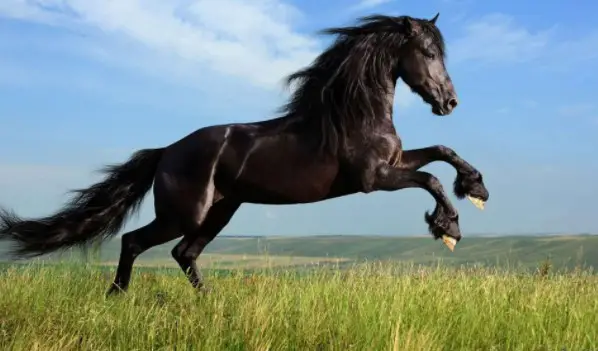
It is essential to distinguish between a purebred and a Thoroughbred. A purebred is any horse produced from the same breed. A Thoroughbred, however, is a specific horse breed developed in England around the 17th Century. The aim was to create a racing and jumping horse.
Characteristics
Thoroughbred horses are ‘hot-blooded’. Known for their agility and speed, they are spirited and intelligent.
They are 60 to 68 inches tall and weigh about 1000 pounds. They are lean, have long necks and legs, and can achieve up to 40 miles per hour. The hind legs are longer to aid in thrusting as they race.
Thoroughbreds are bold animals, but they can be graceful too.
Their diet includes good quality grass, hay, fruits, grains, and vegetables. They have a high metabolism, so they eat a lot. The more they eat, the more they maintain their weight. Some horse owners also choose to give them mineral and vitamin supplements.
Health and Behaviour
Thoroughbreds are prone to health complications. Since owners breed them for racing, they undergo physical strain. The training extremities make their lungs bleed and cause accidents that can lead to fractures. Some accidents during intense exercise can cause death.
The hot-blooded Thoroughbreds have bold behavior. Some riders consider them to be too high-spirited. However, many experienced riders prefer them for their intelligence.
2. Arabian
The beautiful Arabian horse breed is one of the oldest there is. The horse’s existence dates back to 4000 years ago in the Arabian Peninsula. They are popular because of their beauty and elegance.
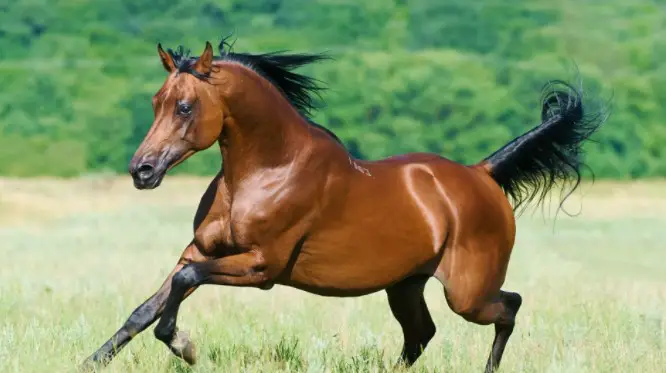
The Arabian breed were originally war horses.
The Arabian horse breeds would trek in hot deserts for long distances. As a result, they have the speed, energy, and endurance for racing. Arabians were purchased for their desirable features. They have since spread all over the world.
Characteristics
Arabian horses are between 54 and 64 inches tall and weigh 800 to 1000 pounds. They have long necks and high tail carriage. They are comfortable to ride and are elegant.
Arabian horse breeds require a healthy balanced diet. The diet includes proteins, carbohydrates, fats, minerals, vitamins, and water. That said, they still eat fresh grass, hay, grains, and fruit.
Because Arabian horses originated back in the desert, they do not require much food to maintain their weight.
Health and Behavior
Arabian horses are susceptible to fatal diseases. Beautiful as they are, they have some genetic disorders.
Arabian horses can suffer from cerebellar abiotrophy. This disorder affects their coordination and balance since it is neurological. They also can have combined immunodeficiency. In this case, a foal is born without an immune system. Unfortunately, as soon as they get an infection, they die quickly.
Behavior-wise, Arabians are calm and pleasant. They are easy to work with and are intelligent.
3. Standardbred Horse
Standardbred’s existence dates back to the 18th Century. They came from North America. The horses first raced with harnesses and are still used for harness racing. Standardbreds are muscular and have longer bodies than Thoroughbreds.
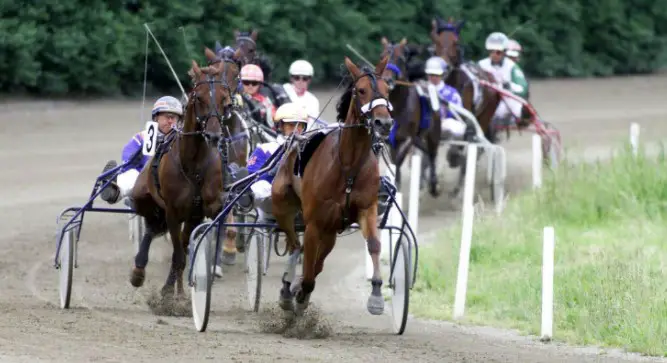
They are one of the friendliest racehorse breeds and are easy to train. Standardbreds come in two types; trotters and pacers.
Characteristics
Standardbreds are between 56 to 68 inches tall and weigh between 800 to 1200 pounds. Their weight contributes to harness-racing ability.
This breed can be divided into two kinds based on their gait. Trotters have a diagonal gait. They step their front left leg and right hind leg in unison and vice versa.
On the other hand, pacers move the legs on their same sides in unison. Pacers also race faster than trotters. Pacers have a smooth running style that riders find relaxing and comfortable. They are also flexible as they can run or trot.
Health and Behavior
Unlike Thoroughbreds and Arabians, Standardbreds have no genetic health concerns. They are only prone to injury or sickness after years of riding.
Their leg build, however, exposes them to risks of arthritis and other foot issues.
Their general behavior is composed and sociable. Standardbreds enjoy being around humans and are a relaxing breed to ride with generally. A former racehorse, however, might not be suitable for general riding and might need retraining.
4. American Quarter Horse
American Quarter Horses are one of the most famous horse breeds. They got their name from their participation in quarter-mile horse races but are also popular as family horses.
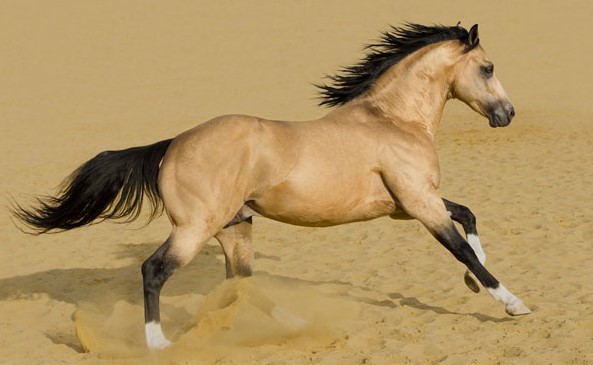
American Quarter Horses are gentle in nature, and they are beautiful, fast, and loyal.
Characteristics
Quarter Horses range between 56 to 64 inches in height. They weigh 950 to 1200 pounds. Quarter Horses have short heads as well as straight and muscular bodies. They have broad chests and powerful back legs.
Health and Behavior
American Quarter Horses have a few prevalent health issues. They can have malignant hypothermia. This condition makes them highly metabolic, and they end up with high temperatures and heart rates. They also have periodic paralysis. This condition makes their muscles twitch and makes them weak or generally paralyzed.
Conclusion
When it comes to racehorses, both male and female horses can race successfully. Both have strength and speed, and there are records of successful female racehorses. However, male horses are still a preference for different owners based on a few different factors. That said, the most crucial aspect when looking for a racehorse is the breed.
